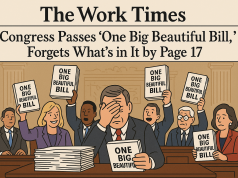[ad_1]
Two three–letter words: “but” and “and.” In grammatical terms, they are called conjunctions. They bridge two clauses of a single sentence together. In communication (and negotiation), these words are subtle manipulators of exclusion or inclusion. Generally speaking, “but” excludes, denies, discounts or in some way rejects the previous clause. For example, the statement “she is a very productive employee but she can be a bit demanding” is subtly different than “she is a very productive employee and she can be a bit demanding.” In the first example, the “but” tends to convey a negation of the first clause of the sentence in favor of the second clause of the sentence. In the next example, the “and” tends to convey an inclusion of the first clause along with the second clause.
Take another example: “Yes I understand you need to meet with me before tomorrow’s meeting but my schedule is packed full” vs. “I Yes I understand you need to meet with me before tomorrow’s meeting and my schedule is packed full.” In this example, by using “and” instead of “but” the speaker not only avoids negating the initial clause but also conveys to the listener that his/her concerns about needing to meet are acknowledged.
Using “and” is also a much softer way to say no. For example, the typical “yes, but” can easily be replaced with “yes, and.” For example, the request “We need to purchase new computers” can be responded to with “yes I know, but we can’t until next year” or “yes I know, and we can’t until next year.” The “and” does not negate the “yes” whereas the “but” does tend to convey a sense of canceling out that which preceded the “but.”
The use of “but” is extraordinarily common. In fact, few people actually recognize the subtle influence of using but. If you were to consciously attempt to change “but” to “and” in your speaking, you will notice how odd it feels. But, it is a worthwhile exercise if for no other reason than to become more comfortable with the ability to switch from one to the other. However, there can be a more important reason: using “and” instead of “but” can positively influence dialogue. When using “and” instead of “but” there is a sense of inclusion and acceptance even if the conclusion is a denial or refusal.
Try it out over the next several days. Listen to others’ sentences and when you hear “but” change it in your own mind to “and.” Then, start listening to your own sentences. When you hear yourself about to say “but” change it to “and” but remember one thing…oops…and remember one thing…
[ad_2]
Source by Ken Fields




























